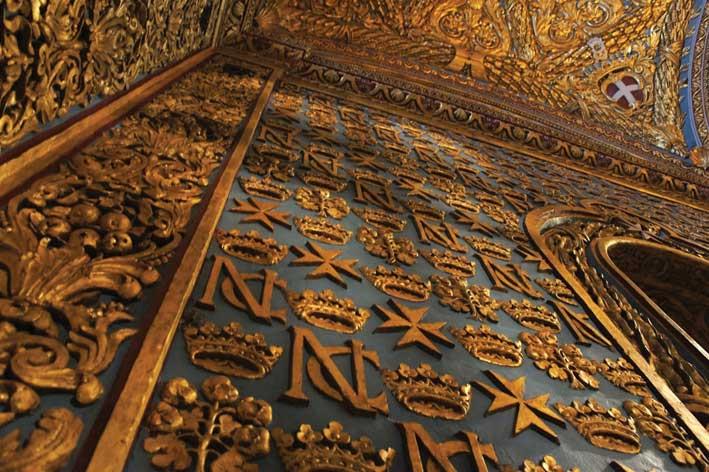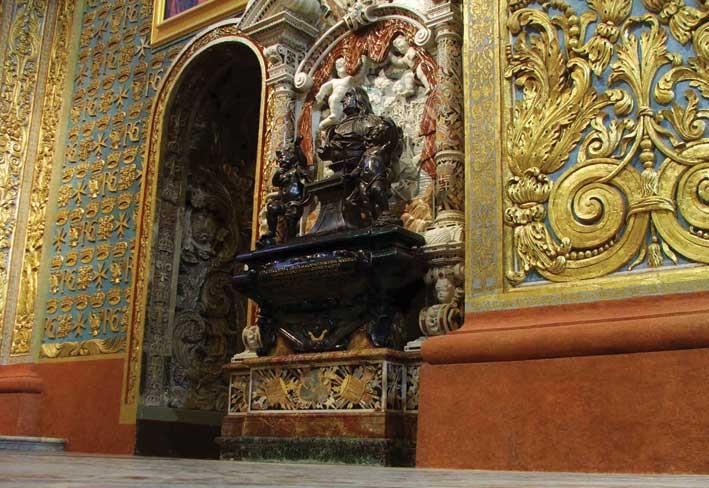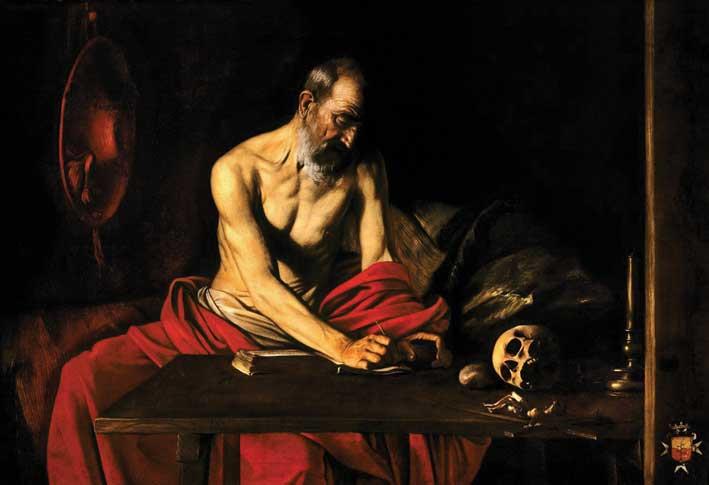The Chapel of Saint Catherine of the Langue of Italy
This brilliantly illustrated coffee-table sized book has been published so many years ago and may well be out of print but it is a treasure for all those who may grab a copy.
It comes in two parts - the restoration of the Chapel of the Langue of Italy and the "Committenze" or "Commissioni" of Grand Master Gregorio Carats. One special part of this last section tells the story of the various attempts to restore the huge ceiling of the church which at one point was risking losing Mattia Preti's biggest ouvre.
The Cappella d'Italia project was the last in a series of important conservation projects that were financed through the Italo-Maltese Financial Protocol. As designed by the Valletta Rehabilitation Project, this was the first fully integrated project in the cathedral, aimed at creating an ideal methodology with a solid scientific base on which other projects could be modelled.
In fact, just as this cappella was the second one to be embellished in the 1660s, this was the first to be fully restored in the 2000s. It served as the template of the restoration of the whole church and decisions which were taken then, in particular the regilding of those parts which were originally gilded, were carried on in the restoration of the whole church.

As far as I know, this is the only book to appear so far and maybe the wealth of information and research that must have been carried out before the restoration of the other chapels still await publication.
The Cappella della Lingua d'Italia, dedicated to Mary Immaculate and St Catherine of Alexandria is the fourth chapel on the left, when one is facing the altar, forming with the Chapel of Aragon, opposite, a sort of transept.
The altar was remade by Romano Carapecchia who replaced the original stone altar with multi-coloured marble. The tabernacle at the centre was actually a reliquary hosting a relic of Saint Catherine while the door is actually a Greek icon. Two holes that can still be seen in the centre of the cupola next to the La Cassiere logo were originally used to hang two oil lamps in honour of the saint.
Under the altar, hidden by a grating, there are the remains of Saint Euphemia, a companion of Saint Catherine, likewise martyred.
The two saints are also honoured by two statues on either side of the altar. The original stone statues can today be found in the old parish church of Zejtun (San Girgor) and were replaced by marble statues.

The altarpiece showing the "mystical wedding" of the saint is by Mattia Preti and is considered to be inferior to the altarpiece of the church of Saint Catherine near the Auberge de Castille.
On top of the altarpiece there is a golden wooden medallion. Once, this oval space contained the Madonna Carafa, which was relocated to the Chapel of the Blessed Sacrament to replace the much-venerated Madonna di Filermo, considered by the Knights as one of their most precious relics, brought by them from Rhodes and taken with them when they left Malta in 1798.
The wooden angels holding up the medallion were found to have slivers of glass at the back, most probably glass from the window at their back, blown in by bomb-blast from across the street (where today there are the Courts of Law).
There is only one marble monument in the chapel - that of Grand Master Gregorio Carafa. At the back of the bust of the grand master there is a bird's eye view in marble of the Battle of the Dardanelles in which Carafa played a significant part but this is ordinarily obscured by the bust. Perhaps as an experiment, the bust had its marble pedestal removed and one readily sees how it fits better with the ensemble at its back. Maybe the search for glory ended up with distorting the monument.
The cupola of the chapel includes two araldic ovals featuring just "Italia" in gold on a black background. When the Order remained in Malta, Italy was still divided in many kingdoms. But the Knights considered themselves to be coming from one langue, as against the French for example who were divided into three langues.

The chapel itself and indeed the church as a whole (actually all buildings in Malta) suffered greatly from rising damp due to the porous nature of the Maltese globigerina limestone. It then suffered equally from inept and unprofessional efforts to tackle the situation.
The book goes to inordinate length (and using many technical terms in Italian) to explain how the rising damp on the walls was tackled with coloured maps with all the details. This shows the professional way the restoration was tackled.
Lastly, the paintings in the chapel. At the beginning, the chapel's altarpiece was that by Francesco Potenzano (today in the cathedral museum). Together with it at the beginning there were two lunettes, the St John in the desert and the Holy Family. Then these two lunettes were moved first to the church of Saint Catherine, next to the Chapel of the Langue of France in St John's and finally to the museum.
The lunettes were replaced by paintings donated by the Knight Ippolito Malaspina, which included masterpieces such as St Jerome by Caravaggio and the Mary Magdalen. The Holy Family is attributed to Giovan Francesco Penni as is St John in the desert. It is said that Caravaggio got to know Malaspina when they were fellow-passengers on their way to Malta.
The Mary Magdalen has been enlarged twice and this posed a problem to the restorers because today's rules forbid a restoration that recreates a painting to an original that is not original at all. In fact, on looking at this lunette one can see the two strips added to the original quite clearly.
One other interesting fact is that when the restorers took down the lunettes they found holes underneath that correspond to the St Jerome painting which must have been hung there before it was moved. It can be admired today in the Oratory of the Beheading.